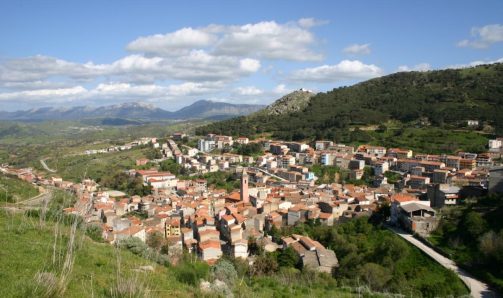Ancient ‘stone’ village in north-central Sardinia, 40 kilometers from Nuoro, famous for an archaic chant and a precious legacy of the Nuragic civilization. It is the main center of northern Barbagia, which in fact was once called Barbagia di Bitti. Livestock farming has made it a point of reference in dairy production (particularly pecorino cheese), a tradition recounted in the Museum of Peasant and Pastoral Civilization, set up in a manor house in the center of town. One of its sections, the multimedia museum of Tenor Singing, is devoted to the art of Sardinian polyphonic singing that has made Bitti famous throughout the world: it is the place where an atavistic memory is best preserved, the most vivid testimony to the archaic roots of Sardinian culture, handed down for centuries from father to son and linked to improvisational poetry, describing moments of agricultural, pastoral and artisan life. The importance of the song has been recognized internationally with its inclusion by UNESCO in the intangible heritage of humanity.
The village is a member of the club of the Authentic Villages of Italy and is located over 500 meters above sea level in a valley surrounded by reliefs. It has distant origins: it is first mentioned in 1170 as Bitthe. The first nucleus dates back to Roman times, while its territory was inhabited from prehistoric times. The village-sanctuary of Romanzesu is the greatest evidence of this: its size, complexity and architectural originality make it a priceless legacy of the Nuragic civilization. It stretches over seven hectares on a plateau within a forest, 13 kilometers from the town. Made entirely of granite, it includes about a hundred huts, several temples, including a well, and a mysterious labyrinth. The name derives from a later Roman settlement (2nd-3rd century AD).
Bitti’s large, low stone houses are arranged amphitheatrically and intersect in narrow alleys. Populated today by 3,000 inhabitants, the village has developed around the parish church of St. George the Martyr. Buildings of worship are endless in the village and in the countryside, many named after the Virgin Mary: noteworthy are the churches of Our Lady of the Annunciation, celebrated with a feast on the third Sunday in May, Our Lady of the Miracle, celebrated on September 30, and Most Holy Savior, celebrated on August 6. Also not to be missed are the Fires of St. Anthony (January 16) and Holy Week, particularly Good Friday with s’Iscravamentu and Easter Sunday with s’Incontru. Among the monuments in the center you will be fascinated by the legendary fountain de su Cantaru.


